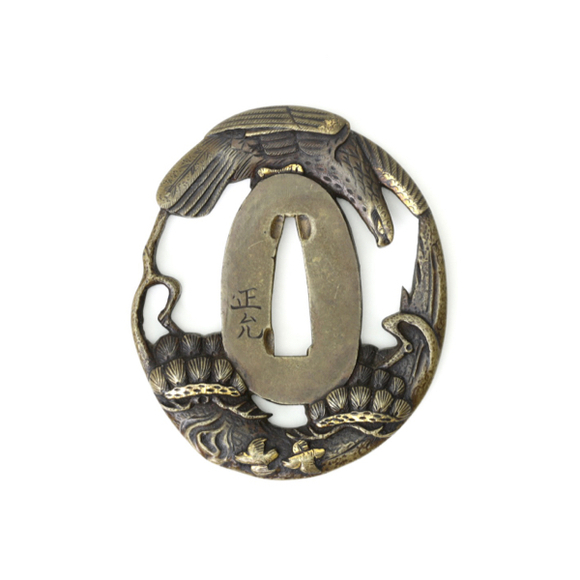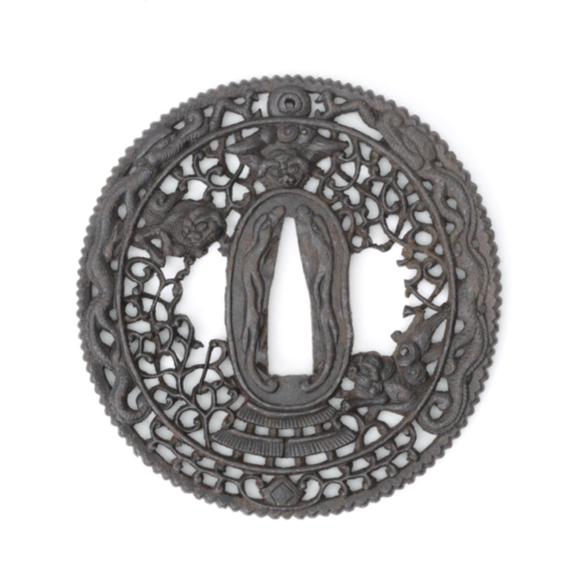Russet iron, one-piece construction with decorative grooves.

70 x 125 cm
Indigo dyed cotton
Japan
Edo period (1603 -1868)
European antique art market
Introduction
Flags played a vital role in battlefield coordination. It showed commanders who was where, and which units were still in action. The most commonly used flag was the hata-jirushi (旗印), a large rectangular flag that was supported by a main pole and a horizontal cross piece.

Japanese screen depicting the Battle of Sekigahara of 1600
1854 replica of a 1620 original by Sadanobu Kanō
Collection of The Town of Sekigahara Archive of History and Cultural Anthropology
This example
A cotton, resist-dyed indigo blue hata-jirushi. It shows a circular mon (family crest) that consists of three fan-shaped elements that are encircled. Probably not coincidentally, the negative space between them looks just like an arrow, flying straight at the observer.

The two white bars below were unit number indicators.
Some staining and fading, as can expected from an old flag that was used in rough conditions. Still structurally sound, with no significant losses or damage other than in color tone.
Dating
I find it very hard to date this flag. The mon is of a somewhat obscure house that is not in the standard literature.
Flags like this were mostly used during the Sengoku period of 1467-1615, but without strong evidence, I am not confident to date it quite that early.
The Edo period was a more peaceful time but not without clashes, such as the Shimabara Rebellion of 1637-1638 or the many battles during the Boshin War of 1868–1869. Even in the Meiji period, former samurai rose up to a more modern imperial army during the Satsuma rebellion which inspired the movie The Last Samurai.


Unusual tsuba with foreign figures and Chinese auspicious symbols.






